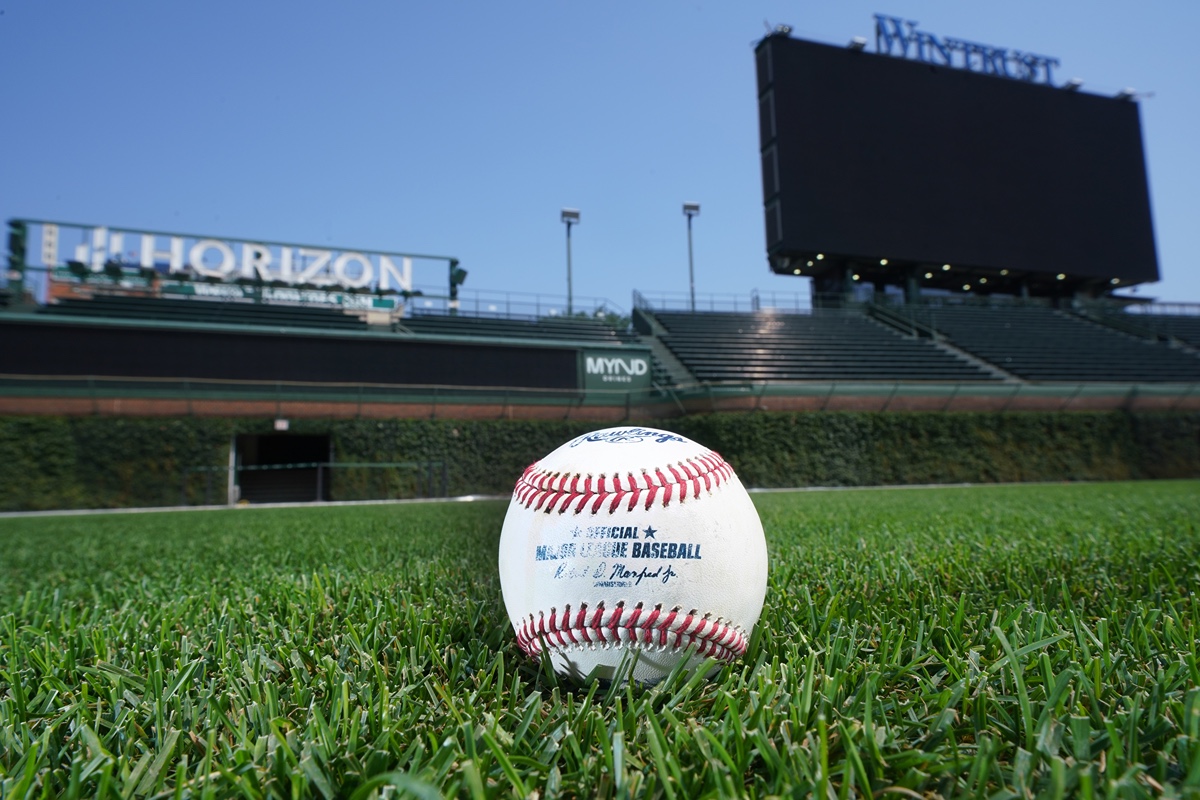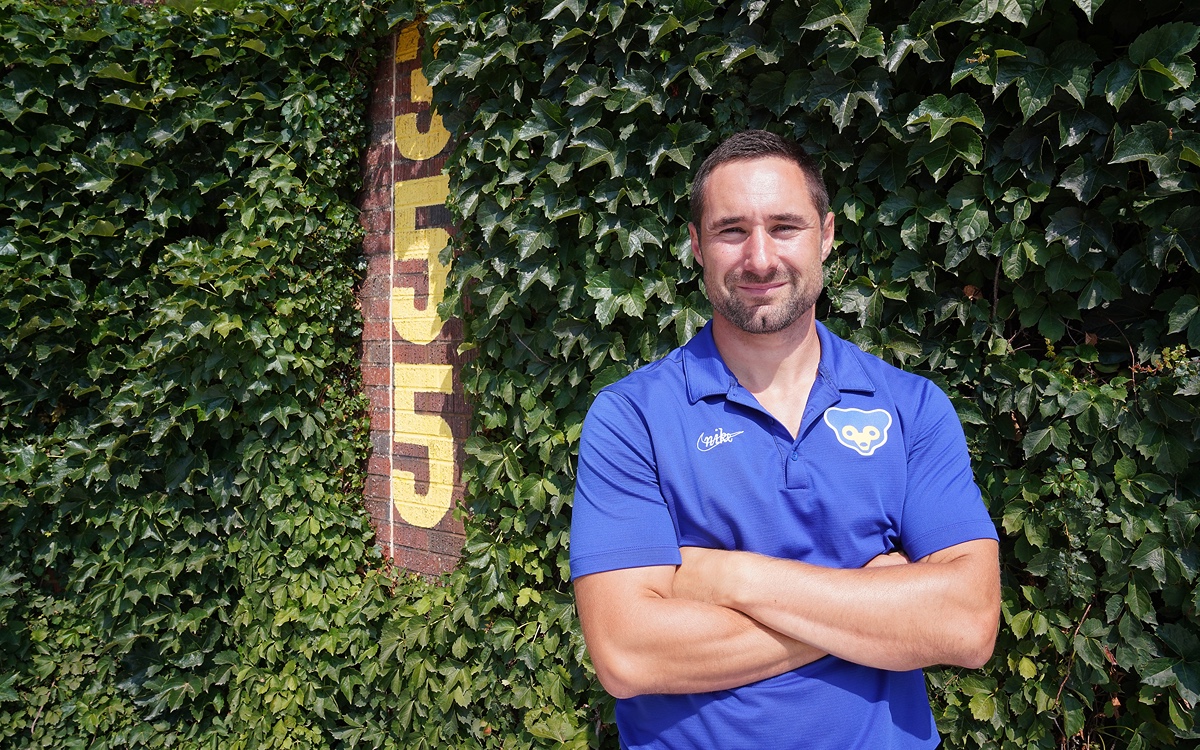From the home turf to the "Friendly Confines"
One turf science graduate’s journey to managing one of America's most iconic baseball fields
A fan first
"For me, it was always Purdue and the Cubs."
It was 1998, and it was the first time that 10-year-old Dan Kiermaier had stepped into iconic Wrigley Field on Chicago's north side, taking in the city views, the sounds of the nearby "L" stop and the smells of roasting hot dogs and buttery popcorn with his mom, dad and brothers. "I remember it clearly. It was the Sammy Sosa and Mark McGwire home run chase year. Sammy hit a homer, and as an athlete and a fan, I was so excited to see that in person."
Kiermaier now stands on that same field in official Cubs gear. It's a regular Tuesday in the “Friendly Confines,” and that means the grounds crew, the team Kiermaier now manages, is hard at work—today preparing for a Guns N’ Roses concert. For Kiermaier, this is all a part of his dream job. A dream he says, "Purdue was a big part of."
The path to Purdue
"I always knew I wanted to be a Boilermaker, but finding my place took me a while."
Kiermaier started his journey as a Boilermaker at Purdue University Fort Wayne, where he began his studies in physical therapy. Kiermaier knew he wanted to stay close to sports and help athletes be the best in their field; he just wasn't exactly sure what that looked like. He transferred to Purdue University in West Lafayette his sophomore year, and started to explore academic programs and his future goals.
Kiermaier's roommate was a turf management and science major in the department of horticulture and landscape architecture and regularly shared with Kiermaier about the program and the different industries graduates were working in. Kiermaier decided that the turf science program would be an excellent fit for him, and he made the transfer.
Kiermaier found the program to be a great mixture of learning and applying what he learned all in a small, tight-knit learning community. "There is a lot of science involved in this field, from biology to chemistry. I think Purdue did a great job covering all the bases you need to succeed."
The science he was taught, he believes, is some of the best "turf science" in the world. "In my mind, my two turf professors Cale Bigelow and Aaron Patton are two of the smartest guys I've ever met. I am thankful I had the opportunity to learn from them and have them as a resource to this day. That has been huge in my career."
Kiermaier notes he also benefited from the program's internship program. His first internship was in his hometown at the Fort Wayne Country Club. While he loved being outdoors and working the course, it was not as familiar to him as another sports field he had spent countless hours on as a kid. The following year, he had the opportunity to get into the "field of his dreams" with an internship with the Staten Island Yankees in New York. "That was my first experience in the baseball industry, and I knew then that was exactly what I wanted to do. I've been chasing that dream ever since."
Rounding the bases to finding a home at Wrigley Field
“There is nowhere in the world like Wrigley Field. It is a dream to get to care for this field each and every day.”
The journey to Wrigley Field took time and commitment. Graduating in the spring of 2012, Kiermaier worked for a landscaping company in his hometown before being offered a job a year later at Camelback Ranch in Phoenix, Arizona, with the Los Angeles Dodgers and the Chicago White Sox.
"This was the first role where I was doing this work professionally and not as an intern. I received a lot of hands-on experience just by sheer repetition. It was a vast complex with a small crew, and I just dove in." From there, he was offered a job at the Cincinnati Reds Urban Youth Academy where he helped to open that complex. In 2015, he received the coveted offer from the Chicago Cubs.
Wrigley Field is the second oldest ballpark in the major leagues and the oldest standing National League ballpark. Preserving its history is something that Kiermaier and his team take seriously. "As much as it has changed with updates and new features over the years, our goal is for people to walk in and feel that same nostalgia they had the first time they visited. For grandparents with grandchildren -- we want them to see the beautiful green grass and the ivy and have the same experience they had 50 years ago.”
Kiermaier notes that even in the major leagues, his main focus is the same as what he was taught during his time at Purdue. "First and foremost, we are always trying to provide a safe field for the athletes. There are a lot of athletes that use our field, and it is viewed on TV every single day by millions of people. So, we're trying to maintain the aesthetics of the field that our fans are expecting, while wanting it to be great to play on as well."
Kiermaier smiles as he notes that he has had to learn to be not only a turf scientist but a botanist to care for the ivy and flowers around campus, and a meteorologist to ensure he can care for the field no matter what weather they face.
"We are always trying to maintain the field agronomically while also being mindful of the business side of things. If we're not doing baseball, there's likely going to be an event. We do a lot of large events, and that's where I rely on my Purdue background. I go back to the science I was taught."
The stage is almost set, and in just 24 hours, thousands will stand on this field and fill the stands to enjoy the concert. The sun is shifting as the final tarps and panels are laid to protect the historic field. Kiermaier scans the Chicago skyline as an incoming “L” train screeches to the stop. That same green field, noises, and smells from 25 years ago are now part of his everyday work. This place is now "home" for him and his family.
With pride, he takes a moment and remarks, "Purdue absolutely helped me get here."









